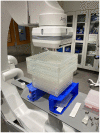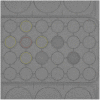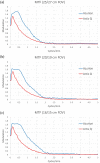Performance evaluation of two interventional fluoroscope suites for cardiovascular imaging
- PMID: 35950644
- PMCID: PMC9588266
- DOI: 10.1002/acm2.13741
Performance evaluation of two interventional fluoroscope suites for cardiovascular imaging
Abstract
Interventional cardiology involves catheter-based treatment of heart disease, generally through fluoroscopically guided interventional procedures. Patients can be subject to considerable radiation dose due to prolonged fluoroscopy time and radiographic exposure, and therefore efforts to minimize patient dose should always be undertaken. Developing standardized, effective quality control programs for these systems is a difficult task owing to cross-vendor differences and automated control of imaging protocols. Furthermore, analyses of radiation dose should be performed in the context of its associated effects on image quality. The aim of the study is to investigate radiation dose and image quality in two fluoroscopic systems used for interventional cardiology procedures. Image quality was assessed in terms of spatial resolution and modulation transfer function, signal-to-noise and contrast-to-noise ratios, and spatial-temporal resolution of fluoroscopy and cineradiography images with phantoms simulating various patient thicknesses under routine cardiology protocols. The entrance air kerma (or air kerma rate) was measured and used to estimate entrance surface dose (or dose rate) in the phantoms.
Keywords: fluoroscopy; image quality; radiation dose.
© 2022 The Authors. Journal of Applied Clinical Medical Physics published by Wiley Periodicals, LLC on behalf of The American Association of Physicists in Medicine.
Conflict of interest statement
The authors have no conflict of interest to declare.
Figures











References
-
- Christopoulos G, Christakopoulos GE, Rangan BV, et al. Comparison of radiation dose between different fluoroscopy systems in the modern catheterization laboratory: results from bench testing using an anthropomorphic phantom. Catheter Cardiovasc Interv. 2015;86:927‐932. - PubMed
-
- Trunz LM, Eschelman DJ, Gonsalves CF, Adamo RD, Dave JK. Investigation of radiation dose estimates and image quality between commercially available interventional fluoroscopy systems for fluoroscopically guided interventional procedures. Acad Radiol. 2021;28(11):1159‐1569. - PubMed
-
- Dehairs M, Bosmans H, Desmet W, Marshall NW. Evaluation of automatic dose rate control for flat panel imaging using a spatial frequency domain figure of merit. Phys Med Biol. 2017;62:6610‐6630. - PubMed
-
- Low‐dose imaging is becoming a clinical reality. 2014. https://www.semanticscholar.org/paper/Low‐dose‐imaging‐is‐becoming‐a‐cli...
MeSH terms
Grants and funding
LinkOut - more resources
Full Text Sources

